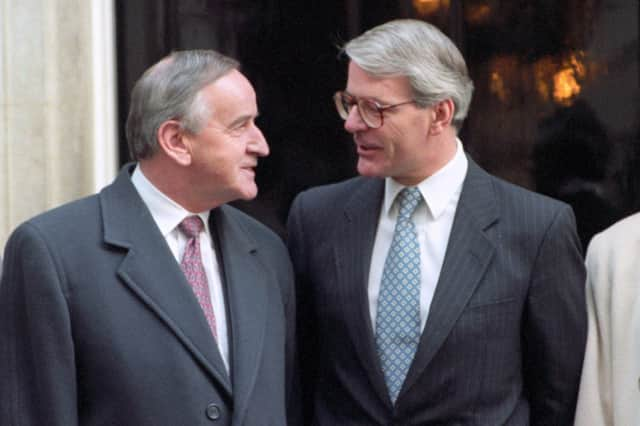Jonathan Caine: Downing Street Declaration of 1993 prepared ground for Belfast Agreement five years later


Its importance can never be stressed strongly enough and it remains the bedrock of all that has been achieved in Northern Ireland over the past quarter of a century.
Yet, we should also never forget that the 1998 Agreement did not suddenly appear out of nowhere. It was the result of painstaking efforts, vision and courage over many years of discussions, and negotiations, as the great George Mitchell graciously pointed out at a conference I attended in Boston in September, and included many key moments.
Advertisement
Hide AdAdvertisement
Hide AdOne of these took place 30 years ago last week when the Prime Minister John Major and Taoiseach Albert Reynolds, signed the Downing Street Declaration. In charting what became known as the peace process, I would contend that next to the 1998 Agreement itself no single event was more ground breaking or important.
It is worth recalling the background against which the Declaration was signed. Northern Ireland politics was in a state of paralysis. The Troubles still raged, with October 1993 seeing 27 people killed in Northern Ireland, including the Shankill bombing and the Greysteel massacre. It was the largest loss of life in a single month since 1976.
John Hume’s discussions with Gerry Adams, facilitated by Fr Alec Reid, had become public, to the dismay of most unionists. In late November, Eamonn Mallie broke the story that a so-called ‘back channel’ had existed for many years between the UK government and the republican movement.
Against this background, the prospect of an imminent political breakthrough seemed remote. Yet, undeterred, both Major and Reynolds persevered, determined to make progress. In so doing they were supported by the then Secretary of State Sir Patrick Mayhew and the Irish Foreign Minister Dick Spring, along with some brilliant officials on both sides.
Advertisement
Hide AdAdvertisement
Hide AdI had a small part in all of this, as the special adviser to Sir Patrick, a man for whom I had the utmost respect. Yet, I can claim very little credit for the final result, having only been brought into the loop in the very late stages. My own role was in helping to frame the subsequent narrative around the Declaration, not least to try and reassure some sceptics within my own party and within Jim Molyneaux’s Ulster Unionists, though Molyneaux and some close to him made contributions to the text.
At its core, the 1993 Declaration sought to address the nationalist aspiration of self-determination for the people of Ireland as a whole, alongside the rock-solid constitutional guarantee that there could be no change in the status of Northern Ireland as part of the United Kingdom without the consent of a majority of those who live here.
The Declaration achieved this in language that was replicated in the 1998 Agreement. This is now commonly referred to as the principle of consent, and is widely accepted by all mainstream political opinion in these islands. Ultimately, the Declaration was a powerful statement that Northern Ireland’s future would only ever be determined by democracy and never by violence.
I have little doubt that the Downing Street Declaration led directly to the IRA and loyalist ceasefires in August and September 1994 and was a key staging post on the road to 1998. Of course there was much hard pounding ahead, but the trajectory was set. For that, John Major and Albert Reynolds, and all those involved, deserve our recognition and gratitude for what they achieved on December 15 1993.
- This opinion article was first published in the Irish News and then on the Northern Ireland Office website. Lord Caine is Parliamentary Under Secretary of State at the Northern Ireland Office